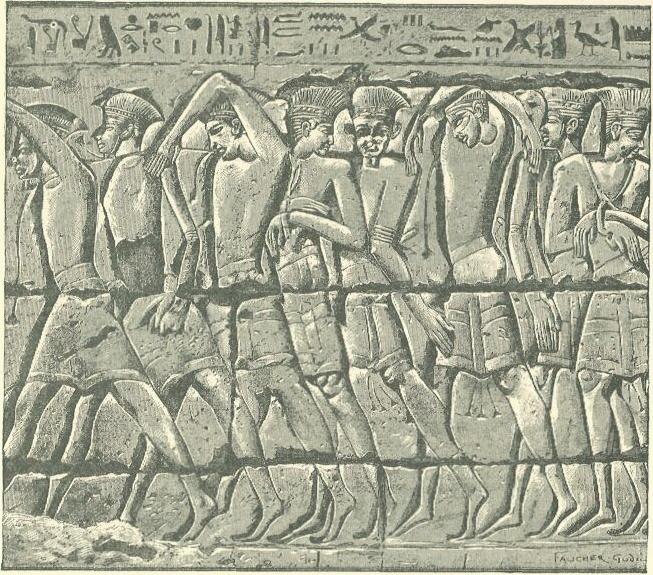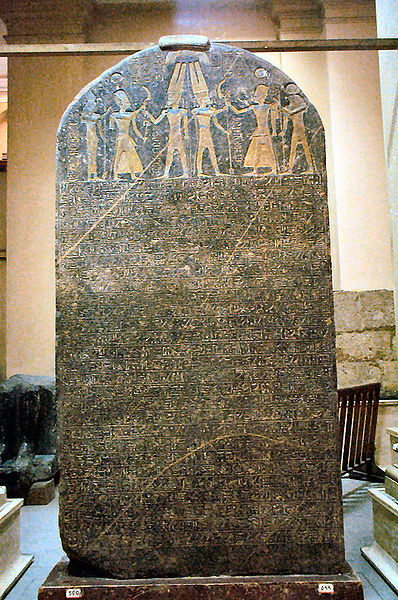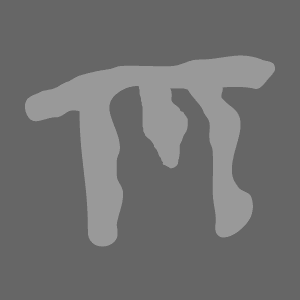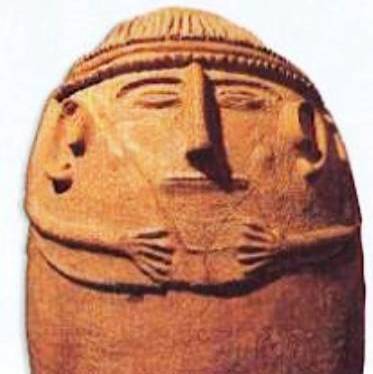|

Necropolis at Pantalica (Sicily)

Sicel vase

Dionysius of Halicarnassus
cites a
landing of the Pelasgians
to Delta of river Po

Submicenean
ceramic exposed
into
Museum of Frattesine

Necropolis at San Giovenale (Latium)
|
|
In the Final Bronze Age, Mycenaean presence in Sicily is
documented by Thapsos, a fortified coastal town .
Inside, it flourishes culture of Pantalica I (1270-1050).
Circa
1200, Thapsos is destroyed, and in the sites of culture of Pantalica
it appears Mycenaean III C pottery.
At Monte Dessueri Sicily), they were found some amphoras identical to those of
necropolis of Azor (XI century), near Jaffa (Israel).
In
eastern Sicily, in the subsequent period (1050-850), they appear the
Sicel cultures of Cassibile or Pantalica II.
These are the elements that would let deduct the identification of Shekelesh with the Sicels and their arrival from eastern
Mediterranean to Sicily, analogous to that of Shardanas in
Sardinia.
After
the defeat against Ramses III, Shekelesh were not among the Sea Peoples who settled in Palestine.
With all probability, therefore,
they should have survived in their homeland (Pamphylia) or around the
ruins of Ugarit (Syria), they
previously
destroyed
.
It
is not excluded their emigration in Sicily may have been
previous the clashes in the Egypt of Merenptah, if it's reliable the high
history of culture of Pantalica (dating since 1270 BC) and the
testimony of Ellanico of Mytilene, reported
by Dionysius of Halicarnassus, according to which the landing of
the Sicels in Sicily would have happened three generations before
the Trojan War, so right around 1275 BC. Dionysius also
reports the date fixed by Philistus (twenty-four years before the
Trojan War), more
less contemporary to the conflict between pharaoh Merneptah and
the Sea Peoples .
The
misunderstang of a presumed
mainland origin of the
Sicels arises
by the relationship of some Greek and Latin historians about the
pre -Roman foundation or the presence
of the Sicels in some towns of Latium (Fescennium, Faleria/Civita Castellana before being conquered by the Pelasgians, Coenina
, Crustumerium, Antemnae , Gabi , Ardea , Ariccia) and the existence of
an important "Sicel district" in Tivoli.
Among
all, however, it is indicative the opinion of the historian Servius who
reports the arrival of the Sicels to Latium from Sicily.
These
traditions show that the searching by Shekelesh from the East to areas with more favorable conditions
of life, was not exhausted with their settlement to the eastern Sicily, but is continued
to the peninsula.
Their
disappearance in Latium would be due, according to the ancient
historians, just the action of the Pelasgians/Philistines .
The "diaspora" of this people, in fact, reached Po delta, where they founded the town of Adria,
too.
Then, the Pelasgians would have
crossed over the Apennines and down the
peninsula until Lake Cotilia, ancient Sabina.
Here they formed an alliance with the indigenous peoples of Aborigines, (Latin: Ab origines),
and drived off - successfully - Sicels from Latium.
The
transfer of the Sicels previously allocated in Latium to Sicily,
and the consequent reunification with their countrymen would end by rafts three hundred years before
the Greek landing there, circa 1035 BC.
This
would have also produced a displacement of people effect from the
mainland to the Aeolian Islands (Lipari especially), documented by
objects of continental origin appeared after the destruction of the earlier
villages and the formation in the archipelago of a new culture
defined "Ausonius"
by
the
archaeologist Bernabò Brea.
The
confirmation of the pelasgian presence at Po Delta (Frattesina;
Fondo Paviani) in this case too, is the discovery of ceramic submicenean III C
ceramic.
The
discovery of some wheel fragments of one bronze tripod cauldron at Piediluco, and some fragments of
twelfth century "Eastern Aegean" pottery at Campo di Santa
Susanna, could be also connected to the arrival
of Pelasgians in Sabina.
The
Pelasgians would
then allocated in
some Tyrrhenian locations
torn by the Sicels,
such as Pisa, Saturnia,
Sutri, Agylla/Cerveteri, Palo (Alsium)
and perhaps even Pirgy/Santa Severa;
this could be confirmed
by the discovery of
imported pottery on
Tolfa Mountains (Monte
Rovello, San Giovenale,
Luni sul Mignone).
The tradition also shows
the existence in Rome of an
Aegean - that is, Pelasgian
- origin village on the Palatine Hill,
founded by the arcade King
Evander.
It is said also a
landing of the Pelasgians/Philistines
in Metaponto (Basilicata). In this case,
too, it may have
left clues in the
discovery of Mycenaean III C
pottery
locally manufactured in
Termitito and
Broglio of Trebisacce. But
there is no trace of such
appropriations in
archaeological documents related
to the subsequent Iron
Age.
|








